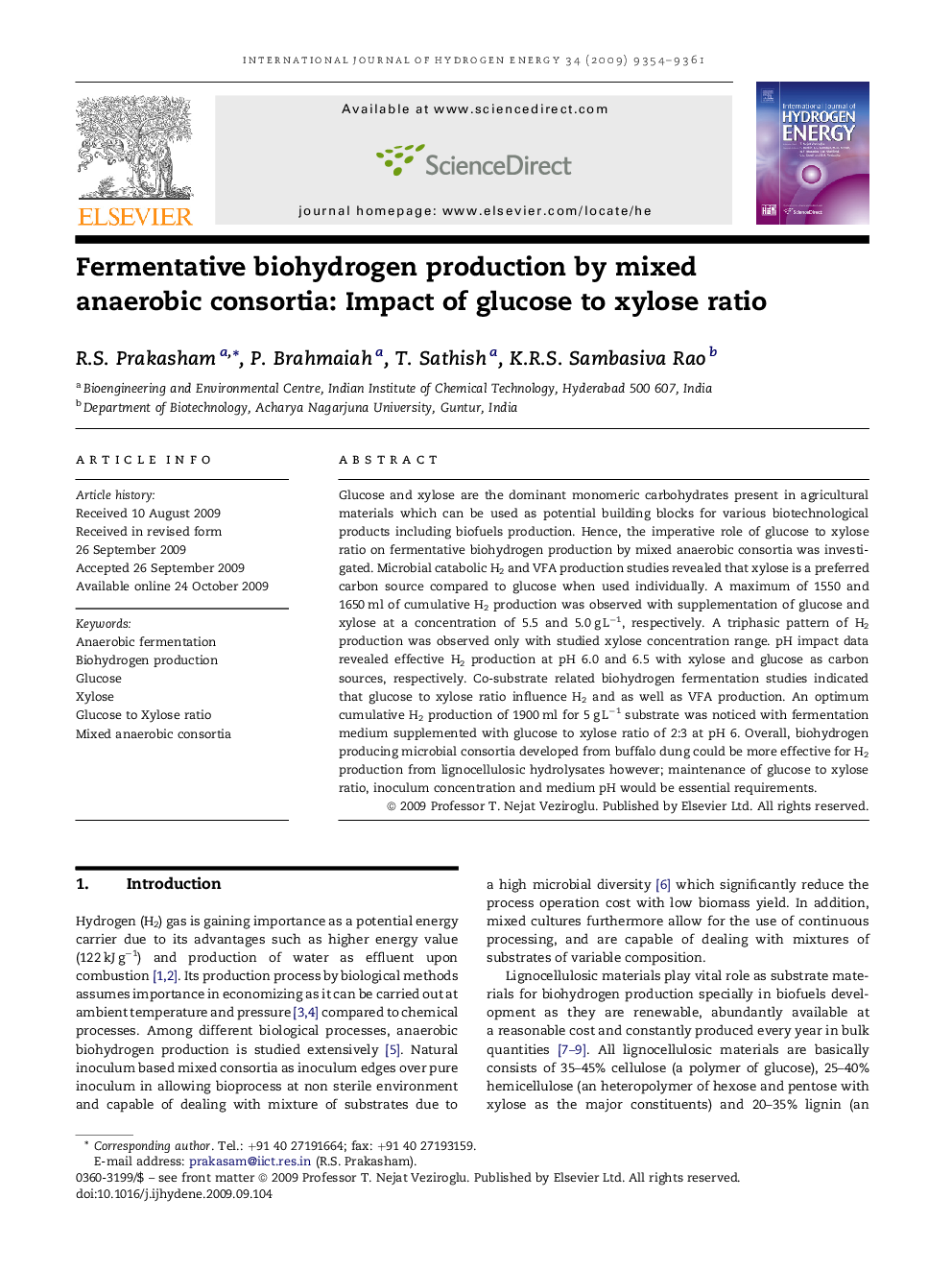| Article ID | Journal | Published Year | Pages | File Type |
|---|---|---|---|---|
| 1277227 | International Journal of Hydrogen Energy | 2009 | 8 Pages |
Glucose and xylose are the dominant monomeric carbohydrates present in agricultural materials which can be used as potential building blocks for various biotechnological products including biofuels production. Hence, the imperative role of glucose to xylose ratio on fermentative biohydrogen production by mixed anaerobic consortia was investigated. Microbial catabolic H2 and VFA production studies revealed that xylose is a preferred carbon source compared to glucose when used individually. A maximum of 1550 and 1650 ml of cumulative H2 production was observed with supplementation of glucose and xylose at a concentration of 5.5 and 5.0 g L−1, respectively. A triphasic pattern of H2 production was observed only with studied xylose concentration range. pH impact data revealed effective H2 production at pH 6.0 and 6.5 with xylose and glucose as carbon sources, respectively. Co-substrate related biohydrogen fermentation studies indicated that glucose to xylose ratio influence H2 and as well as VFA production. An optimum cumulative H2 production of 1900 ml for 5 g L−1 substrate was noticed with fermentation medium supplemented with glucose to xylose ratio of 2:3 at pH 6. Overall, biohydrogen producing microbial consortia developed from buffalo dung could be more effective for H2 production from lignocellulosic hydrolysates however; maintenance of glucose to xylose ratio, inoculum concentration and medium pH would be essential requirements.
